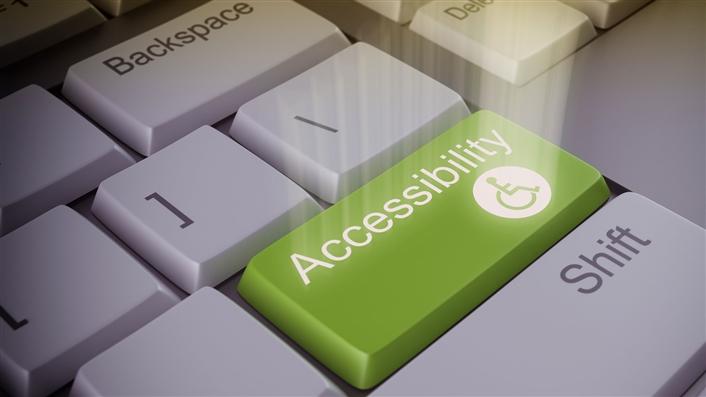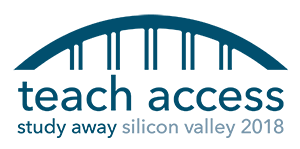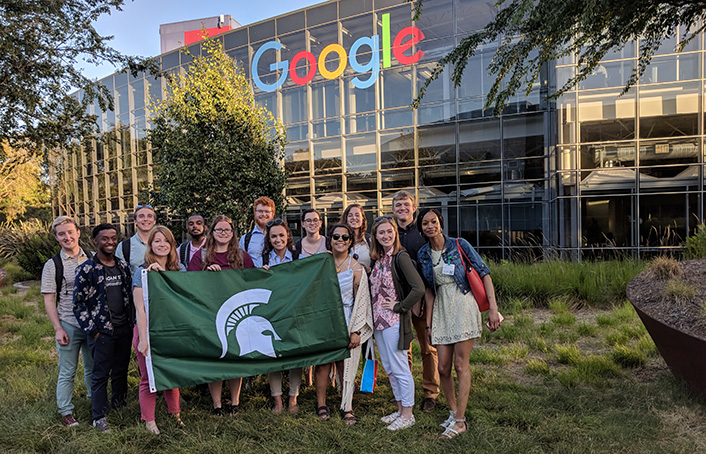Tech companies and higher education come together to increase the level of skills and awareness of accessibility among graduates.

When leaders from some of the nation's largest technology firms all realize that they face the same problem, innovation is likely to follow. In 2015, accessibility experts from across Silicon Valley recognized they were all trying to overcome a common hurdle: Their new hires, fresh out of college, would arrive at their first day of work with little or no knowledge of accessibility.
"This is a huge education gap," said Laura Allen, Google's manager for accessibility on Chrome and Chrome OS. "When engineers and project managers first start here at Google, we take them through accessibility training that's part of our orientation. For most people, that seems to be the first time that they've ever heard about accessibility."
Larry Goldberg, senior director of accessible media at Oath (formerly Yahoo!), said that often fewer than five percent of new employees had even heard about accessibility in college. "When we do orientations about accessibility, we get blank looks," Goldberg said. That creates a need for additional training at Oath.
"Right now, there are a few people [in the technology industry] who know a lot about accessibility. We need a lot of people who know a little bit about it," Goldberg said. "We need systematic change so that emerging technology doesn't face accessibility barriers."
Closing the Gap in Accessibility Expertise
These conversations led to the creation of Teach Access, a collaboration among accessibility advocates, technology industry leaders, and the higher education community. Its mission is to make accessible technology ubiquitous through four core initiatives: enhanced higher education curricula, academic leadership, new accessibility-focused learning tools, and changes to corporate hiring practices. Central to these is an effort to increase cooperation between the technology industry and higher education, working to embed accessibility topics into university and college curricula.

Allen believes this is the first step in changing the overall accessibility landscape. "We are trying to get [accessibility] into the core curriculum of universities. Our target right now is introducing this more into universities so that when CS or design or [human-computer interaction] graduates actually go into the workforce they know accessibility concepts. Then they can hit the ground running."
After initial conversations, Teach Access created a task force to accomplish the various components of the mission. Allen co-chairs the Driving Academic Engagement task force as the industry representative. Kate Sonka, assistant director of academic technology at Michigan State University's College of Arts & Letters, serves as higher education representative and Allen's co-chair. "Laura and I were looking at ways to get students interested in this at universities," Sonka said. To do so, they created a Silicon Valley Study Away experience for students from across the country.

Showcasing Industry Needs in Onsite Student Experiences
"The idea behind a study away is that it is an immersive experiential learning opportunity where students are engaging in a place and space that's different from what they would normally see, but they aren't leaving the country," Sonka said. "The goal was to get students from a few universities out [to Silicon Valley] at the same time as a way for students to network and learn from each other and for industry to learn from universities and vice versa."
The first study away concluded in early June. Four institutions—Michigan State University, California State University Northridge, the University of Colorado, and Olin College of Engineering—sent a total of 27 students for the weeklong program. They primarily came from computer science or experience design majors, though backgrounds ranging from marketing to journalism were represented. They were housed on the Stanford University campus and traveled daily to different companies for an in-depth look at accessibility operations.
Opening day included an orientation and an introduction to accessibility, followed by a presentation from Microsoft's accessibility team. The second day was spent visiting Google, which began with a tour of company facilities and brief talks. "We went into a product roadshow where we had experts from Android, from Chrome OS, from a whole set of products, tell us about accessibility and what it looks like to build out accessible features and functionalities," Allen said. "It was fun and engaging; something that people clearly want to be a part of because they know this is a really big need. They know that that a lot of our teams are…trying to hire people who have accessibility knowledge and expertise. I think that all of us at Google are very aligned on wanting to build a better and more accessible world, and one way to do that is to educate more people about accessibility earlier."
Making Accessibility a Priority for All
For students, a highlight of the day at Google involved a presentation by Hoby Wedler. "He is blind, and he discusses the ways that he perceives the world and then helps other people think about those things," Sonka said. Wedler had students do a blind olive oil tasting to start to understand nonvisual perception.
"[Wedler] did one demo on stage with plastic water bottles," Sonka said. "He gave four blindfolded students different brands of water bottles and then had them describe the bottles. He asked questions about the sounds the bottle made, how they opened, how the plastic felt." Sonka said students walked away with better understanding of the entirety of the sensory experience.
The next day, Larry Goldberg of Oath opened that visit with a tour of the highlights of their complex. "At Oath, we know that whenever we bring people, there's a few stops you always want to do," he said. "We have a TV studio, our accessibility lab, our user experience lab. We wanted them to see the culture of the campus and to show how the accessibility team interfaces with all the other teams."
The TV studio stood out to students. "They had so much fun interviewing each other in studio and seeing their words appear in real time via live captioning," he said.
Within the student group, Goldberg saw characteristics common of many new employees. "Many of them had never turned on VoiceOver on their iPhone," he said. "They may have never known someone with a disability, or never thought of people with disabilities using technology."
The study away continued with a day at Adobe and culminated with a visit to Facebook's campus. Following tours of Facebook's facilities and an introduction to the company's accessibility team, the students spent their last afternoon presenting final projects to a collection of representatives from the host companies.
Allen said that the students' energy and enthusiasm for the experience were made manifest in their final presentations. "They had super-creative, interesting ideas," she said. "One of the groups came up with this interesting game for children. It was geared toward trying to have a natural and comfortable way for kids to talk about different questions related to disability." Other groups focused on ways to energize their campuses around accessibility and on product prototypes for accessible devices.
Supporting Educators in Rethinking Curricula
Sonka, Allen, and Goldberg all plan to host another study away. But this isn't the limit to Teach Access's push to more tightly couple higher education curricula with Silicon Valley's accessibility initiative.
Teach Access has joined with the Partnership on Employment & Accessible Technology (PEAT) to fund a grant program that supports faculty members in reworking courses to incorporate fundamental accessibility practices. In July, the coalition announced its nationwide grant recipients, each of which will receive $5,000 to integrate accessibility principles into courses in meaningful and innovative ways. These grants mark the first step toward a broader push from Teach Access to fully involve faculty members in integrating accessibility into teaching. Goldberg said that the results of all winners' course redevelopment will be publicly posted on the Teach Access website, and plans are already in place for additional faculty events such as accessibility bootcamps, which could begin in 2019.
Teach Access's work has already had a lasting positive effect. Trevon Smith, an experience architecture major at Michigan State University, shared his enthusiasm for the study away program. "The whole point of this was raising awareness for accessibility," he said. "There is so much to gain from this program. You learn so much. I fell in love with the different technology and assistive technology." Smith said he could see himself working at any of the companies he visited, though that hadn't been a career path he previously considered.
"Honestly, I don't know anybody who wouldn't want to be a part of something like this," Smith said. "I have the biggest advantage compared to other employees applying for a job because I have been part of Teach Access. I'm going to go in knowing more than anyone about accessibility. To be a part of a product, be part of a team. To make something that's accessible for everybody. That's a dream come true to me."
Jeremy Van Hof is Director of Learning Technology at Development at Michigan State University.
© 2018 Jeremy Van Hof. The text of this work is licensed under a Creative Commons BY-NC-ND 4.0 International License.
